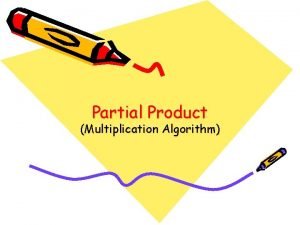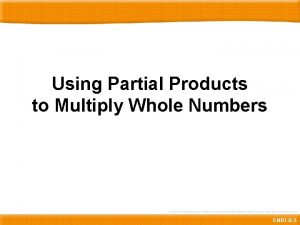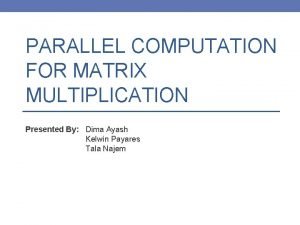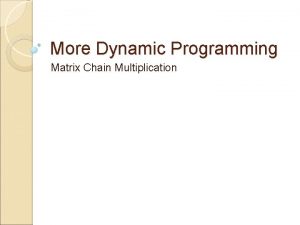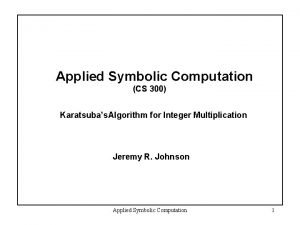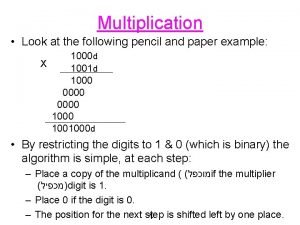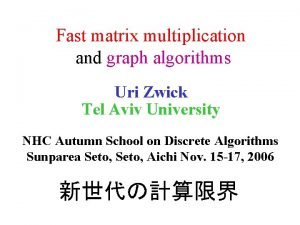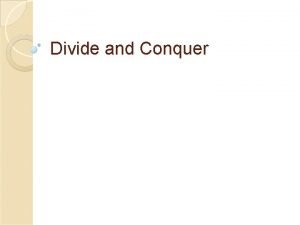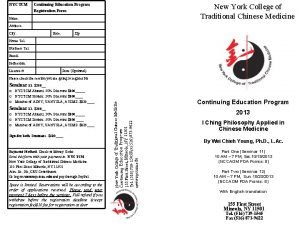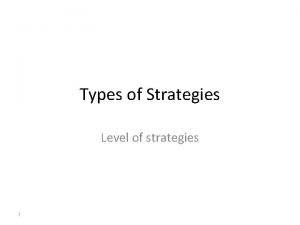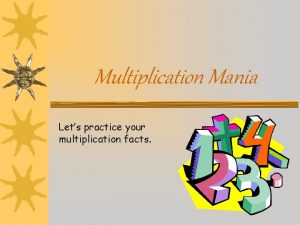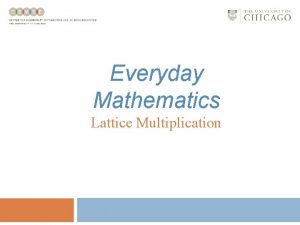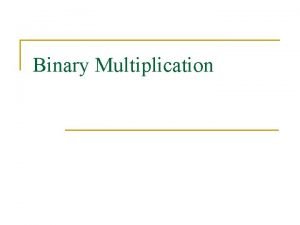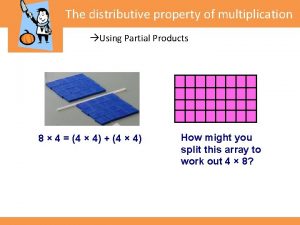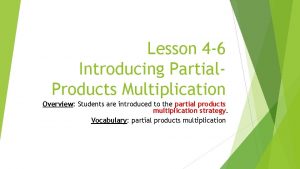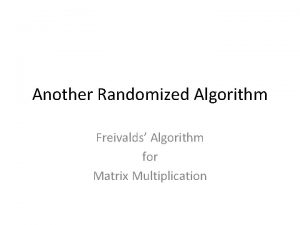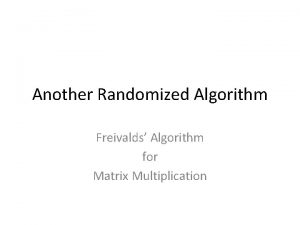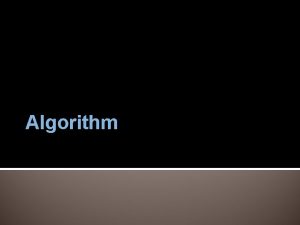MULTIPLICATION STRATEGIES Traditional Algorithm New Options Partial Products






















- Slides: 22

MULTIPLICATION STRATEGIES Traditional Algorithm New Options: Partial Products Area Model (Array) Lattice Method

Review - Distributive Property 5 x 39 = ? 39 = 30 + 9 5 x 39 = (5 x 30) + (5 x 9) = 150 + 45 = 195

Review - Expanded Form 53 = 50 + 3 639 = 600 + 30 + 9 4, 315 = 4, 000 + 300 + 10 + 5

Traditional – 1 by 3 14 639 x 5 3, 1 95

Partial Products – 1 by 3 639 x 5 45 150 + 3000 3, 195 639 = 600 + 30 + 9 5 x 9 5 x 30 5 x 600

Area Model – 1 by 3 5 x 639 = ? x 600 + 30 + 9 5 3, 000 150 45 5 x 639 = 3, 195 3, 000 150 + 45 3, 195

Lattice Method – 1 by 3 5 x 639 3 6 3 3 9 x 1 4 5 0 5 5 1 5 9 5 x 639 = 3, 195

Traditional – 2 by 2 21 45 x 53 135 + 225 2, 385 Students in the upper grades will learn this algorithm.

Partial Products – 2 by 2 45 x 53 15 120 250 + 2, 000 2, 385 3 x 5 3 x 40 50 x 5 50 x 40 http: //learnzillion. com/lessons/529 -multiply-multidigit-numbersusing-partial-products

Area Model 2 by 2 45 x 53 = ? x 40 5 50 2, 000 + 3 120 250 15 2, 250 135 2, 250 + 135 2, 385 45 x 53 = 2, 385 http: //learnzillion. com/lessons/528 -multiplymultidigit-numbers-using-an-area-model http: //learnzillion. com/lessons/1879 -use-anarea-model-to-multiply-two-digit-numbers-by -two-digit-numbers

Lattice Method – 2 by 2 45 x 53 = ? 4 5 x 2 2 2 0 5 5 1 1 3 2 5 3 5 8 45 x 53 = 2, 385

Lattice Method with More Digits Traditional Lattice

Khan Academy. org: LATTICE MULTIPLICATION DEMO (length~7: 15) https: //www. khanacademy. org/math/arithmetic/multiplicati on-division/lattice_multiplication/v/lattice-multiplication LATTICE MULTIPLICATION: WHY IT WORKS https: //www. khanacademy. org/math/arithmetic/multipl ication-division/lattice_multiplication/v/why-latticemultiplication-works

Your Turn Solve the following using a method other than the traditional algorithm. 35 x 24

Bonus -Distributive Property Helps with Math Facts 6 x 7 = (6 x 5) + (6 x 2) = 30 + 12 = 42 5 x 12 = (5 x 10) + (5 x 2) = 50 + 10 = 60 8 x 12 = (8 x 10) + (8 x 2) = 80 + 16 = 96

DIVISION STRATEGIES Traditional Algorithm New Options: Partial Quotients Modeling Chunking Distributive Property

https: //www. khanacademy. org/math/arithmetic/multi plication-division/long_division/v/dividing-by-a-twodigit-number

http: //learnzillion. com/lessons/28 -solve -division-problems-with-remaindersusing-partial-quotient https: //www. khanacademy. org/math/arithmetic/ multiplicationdivision/partial_quotient_division/v/partialquotient-division


- 12 (4 x 3) 0


Your Turn Solve the following using a method other than the traditional algorithm. 6944 ÷ 31
 Partial products algorithm
Partial products algorithm Partial products
Partial products Partial products multiplication
Partial products multiplication Trading strategies involving options
Trading strategies involving options Cboe options strategies
Cboe options strategies Tailing the hedge
Tailing the hedge 2 digit multiplication strategies
2 digit multiplication strategies Multiply decimals using partial products
Multiply decimals using partial products Examples of functional and innovative products
Examples of functional and innovative products Pepsi products vs coke products
Pepsi products vs coke products Algorithm math multiplication
Algorithm math multiplication Cannon algorithm
Cannon algorithm Matrix chain multiplication formula
Matrix chain multiplication formula Karatsuba algorithm for polynomial multiplication
Karatsuba algorithm for polynomial multiplication Pen and pencil algorithm
Pen and pencil algorithm Log n multiplication algorithm
Log n multiplication algorithm Strassen's matrix multiplication
Strassen's matrix multiplication Flowchart for booth's multiplication algorithm
Flowchart for booth's multiplication algorithm Partial quotients definition
Partial quotients definition Traditional marriage algorithm
Traditional marriage algorithm Nyctcm
Nyctcm Differentiation strategy
Differentiation strategy Processing used materials into new products
Processing used materials into new products
